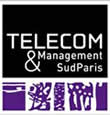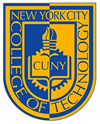

 |
The Seventh Advanced International Conference AICT 2011 March 20-25, 2011 - St. Maarten, The Netherlands Antilles |
|
|||||||||||||||||||
| Details: |
ISBN: 978-1-61208-123-6 |
|
||||||||||||||||
All tracks/topics are open to both research and industry contributions.
Tracks:
Signal processing, protocols and standardization
Standardization (IEEE 802.17, Policy Models, Etc.); IEEE 802.11 engineering; Telecommunications protocol engineering; Future networks: protocol and standards; Standardization (IEEE 802.15, IEEE 802.16); Communication theory, signal processing, modulation; Modulation, coding and synchronization; Propagation, antennas and channel characterization; Signal separation and Interference rejection; Critical infrastructure protection
Ad Hoc, autonomic and sensor networks
Autonomic home networking; Sensor, mesh, and Ad hoc networks; Programmable networks; Active networks; Self-organization and network reconfiguration; Partial and intermittent resources and services; Unicast and multicast routing; Radio resource sharing in wireless networks; Energy-efficient communications; Vehicular Ad hoc networks; Underwater sensor networks; Emerging sensor technologies; Intelligent video surveilance; Multi-sensor surveillance;
Wireless technologies
3G And 4G Mobile communications services; Evolution from 2G To 2.5G, 3G and beyond; Wireless multimedia and networks and systems; Cellular and Ad hoc networks; Mobile broadband technologies; Mobile software (agents); Wireless access (WPAN, WLAN, WLL); Wireless communications antennas and propagation and transmission technologies; Vertical, horizontal and diagonalhandover; Broadband wireless technology (HSDPA, HSUPA, LTE, Wimax, Wiran); Cross-layer modeling and design; Heterogeneity and diversity; Ultra-wideband communications (UWB); Wireless hacking;
Management, operation and control networks
Monitoring telecommunicaitons systems; Network management contingency challenges; Real-time traffic and QoS; Performance and QoS, traffic engineering (MPLS, Diffserv, Intserv, Etc.); Telecommunications management and control of heterogeneous networks; Mobility control and mobility engineering; Mobile video surveillance; Mobility and QoS management; Communications networks security; Information security; IPR and network security;
Core technologies and access technologies and networks
Wireless-fiber convergence; Metro/Access networks; Broadband access networks and services; Next Generation Networks and technologies; Future Internet; Inteligent & Smart networks; Grid, Cluster and Internet computing; Designing and management of optical networks; Performance of optical networks; Future technologies in optical communications; PLC (Homeplug, OPERA, UPA, CEPCA, IEEE, HD-PLC Alliance);
Future applications and services
Service-oriented architectures; E-Learning and mobile learning on telecommunications; SOHO (Small Offices/Home Offices; Emerging telecommunications software tools; Object and component technologies in telecommunication software; Platforms for Web Services-based applications and services; Web Services communications, applications, and performance; Applications in telemedicine; Security and trust in future services applications;
Optical Technologies
Optical internetworking architectures; Novel architectures for optical routers and switches; Optical packet / burst switching; Optical multi-wavelength label switching; Optical network performance modeling; Optical network control and management; Measurement, monitoring and supervision techniques; Security and privacy in optical networks; Optical access networks designs and protocols; High speed optical LANs and gigabit Ethernet; Energy efficiency in optical networks; Inter-working between optical and wireless networks; Optical Grids, optical networking for cloud computing; Optical integrated circuits and novel transmission methods; Standards for optical internetworking; Optical networks for future Internet design; Multi-domain routing protocols for IP over optical networks; Control and management protocols for IP over optical networks; Next-generation IP networking and Optical Internet; Development prospect for Optical Internet; Optical transmission systems and technologies; Optical access systems and technologies; Optical devices
Cognitive radio
Cognitive radio technologies and opportunistic spectrum utilization; Spectrum sensing technologies; Dynamic spectrum access; Information theory and performance limits of dynamic spectrum access; Distributed algorithms for spectrum detection and cooperative spectrum sensing; Inter- and Intra- standards interoperability; Cross-layer algorithms based on spectrum sensing techniques; Advanced signal processing techniques for cognitive radio; Physical-layer design of software radio and cognitive radio transceivers; Interference and coexistence analysis; Radio resource allocation; Decision making; Game theory; Cognitive radio with reinforcement learning; SWR and CR management; Cognitive radio sensing in the large and feature detection; Spectrum and performance management in cognitive radio networks; Cognitive radio applications; Future Internet with cognitive technologies; Flexible and opportunistic wireless access; Multimedia communications through cognitive networks; Regulatory policies on spectrum sharing for future broadband networks; Cognitive radio standards; Cognitive radio architecture for equipments; Enabling SDR technology for cognitive radio; Hardware reconfigurability; Testbbeds
Teletraffic modeling and management
Traffic and performance measurements; Traffic characterization and modeling; Trends and patterns; Scaling phenomena; Packet and flow level models; Traffic control and QosS; Queuing theory and queuing networks; Performance evaluation; Scheduling and admission control; Reservation and priority mechanisms; Overload control; Broadcast and multicast traffic control; Analytical and numerical analysis; Network design and optimization of wired and wireless networks; Mobility and resource management; Traffic monitoring and management; Traffic engineering in multi-technology networks; Internet traffic engineering; Traffic grooming; Simulation methodology for communications networks; Simulation models and tools;
E-Learning and telecommunications
Architecture of learning technology systems; Advanced uses of multimedia and hypermedia; Integrated learning and educational environments; National and international projects on e-learning and telecommunications; Remote and wireless teaching technologies; Navigational aspects for learning; e-Learning industry and universities programs; Anytime/anywhere e-learning and wearable network devices; Tutoring e-learning applications and services; Cost models for e-learning on telecommunications; Satellite technologies for e-learning; Teaching e-learning methodologies and technologies; Adaptive e-learning and intelligent applications/tools; Agent technology; Training e-learning teachers; Practical uses of authoring tools; Application of metadata and virtual reality; Collaborative learning/groupware; Intelligent tutoring systems; Internet based systems; Application of instructional design theories; Evaluation of learning technology systems; Standards related activities;










